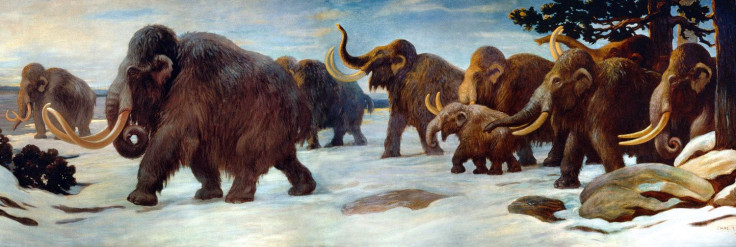First Mammoth Traps Discovered, Gives New Insights To Pre-Historic Man's Hunting Tactics
Archeologists discover ancient traps containing the bones of 14 mammoth bones that gave them hints on how early humans interacted with the creatures.
During 10 months of excavation in the San Antonio Xahuento District in Tultepec, Mexico, 824 bones have been found in the 5.5 feet deep by 82 feet long traps.
The traps, National Institute of Anthropology and History (INAH) archaeologist Luis Córdoba Barradas told The Yucatan Times, are artificial mammoth traps and are the very first of its kind to be discovered.

The site, archeologists believe may be one of a series of hunting grounds for the pre-historic men that guaranteed them a good catch.
CNN reported Pedro Francisco Sánchez Nava, national archaeology coordinator at the National Institute of Anthropology and History (INAH) saying, “It represents a watershed, a touchstone for how we previously imagined groups of hunter-gatherers interacted with these enormous herbivores.”
Reportedly, groups of 20 to 30 hunters would use torches and stick to separate a lone mammoth from its herd and push it towards the traps where the creatures would eventually be killed and used for food and other necessities.
Archeologists found evidence that the mammoths’ rib bones were used to cut the meat, the internal organs were also eaten, and that the reason why some mammoth skulls were found upside down is because hunters also consume the animal’s tongue, which weighed around 12 kilograms.
Evidence also suggested that mammoths were not only sources of food for the early men but were also honored.
A mammoth bone showed signs of a fracture and archeologists stated that this animal had been tracked down and hunted for years and when the hunters finally caught it, the bones were arranged in a symbolic formation.
“They must have considered it brave and ferocious, showing their respect with this particular arrangement,” INAH archaeologist Luis Cordoba said.
Tultepec already has a Mammoth Museum that has an almost complete mammoth skeleton discovered back in 2016 on display. The newly discovered bones will serve to add to the museum’s collection.
© Copyright IBTimes 2025. All rights reserved.





















